June 7, 2025 | 06:24 GMT +7
June 7, 2025 | 06:24 GMT +7
Hotline: 0913.378.918
June 7, 2025 | 06:24 GMT +7
Hotline: 0913.378.918
Ninh Thuan waters have many favourable factors for the development of aquaculture. This is a place with few storms and winds, negligibly affected by river water. The bottom layer is mainly rocky and coral reefs, so when the food is dropped, it will be washed away according to the up-and-down cycle of the tide. Therefore, it does not stagnate at the bottom, so the water source is less affected and very suitable for marine farming.
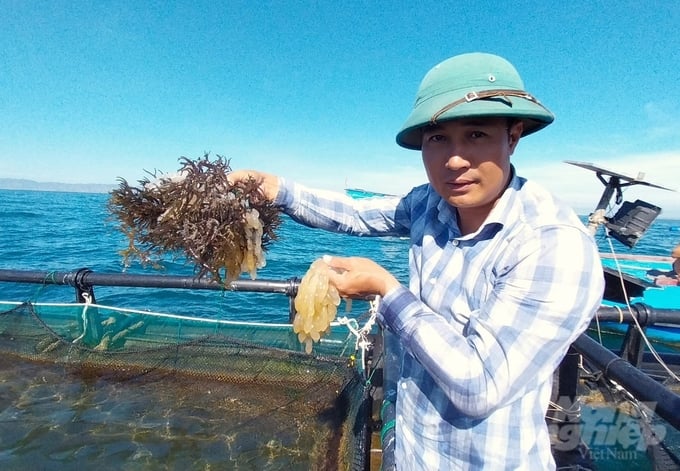
The first model of breeding and raising commercial squid in a semi-natural environment in Vietnam was successfully implemented by Mr Nguyen Ba Ngoc in Ninh Thuan. Photo: Phuong Chi.
Up to now, to raise squid, fishermen often catch breeding squids from the wild and raise them until they reach adulthood, without mastering the squid farming process.
This prompted Mr Nguyen Ba Ngoc (Thanh Hai commune, Ninh Hai district, Ninh Thuan) to learn and research new directions for the marine farming industry in Vietnam. Mr. Ngoc comes from a family with four generations of marine life, he has been attached to the sea for more than 15 years, so he has a great love for the sea.
In 2021, with the accumulated experience, Mr Ngoc will begin piloting the model of breeding and raising commercial squid in a semi-natural environment in the Vinh Hy beach area (Vinh Hai commune, Ninh Hai district, Ninh Thuan province) with an area of 180m2. This is the first squid farming model in a semi-natural environment in Vietnam.
At first, Mr. Ngoc sought out workers in the Cam Ranh area to hire and manufacture squid cages, but he did not receive the consent Because the cages are large, they are difficult to design and construct. At this time, he had to mobilize all resources from his family to support him in doing this work. Additionally, the cages are large, so the process of bringing the cages to the sea is difficult.

Squid has a life cycle of about 15 months. During its life cycle, the squid can reproduce about 50,000 eggs. Photo: Phuong Chi.
“My business is a private research unit. Talking about moving a cage with an area of 180m2 and 6m high to the sea is no different than moving a building. Constructing the cage was very difficult, let alone the process of moving it from the port to the sea, a distance of more than 3 nautical miles, and then positioning and lowering the cage. Meanwhile, overseas, to do that, it takes a $ 2 million equipment rig to accomplish", Mr Ngoc shared.
Mr Ngoc said that with the experience accumulated over 15 years of working with the sea, he took advantage of ocean currents to successfully bring the cages to the sea.
In the early days of implementing the model, because there was no seed source, he bought parent squid from fishermen caught in the sea, then brought them back to the cages for the squid to lay eggs. The number of eggs is about 10,000 eggs/parent pair/laying. The squid eggs are brought back to shore to hatch into baby squid, then brought back to the sea for commercial farming.
"The first step shows very positive signs, the squid lays many eggs and the hatching rate is very high, the squid develops well," said Mr Ngoc.
From the results obtained, in 2022, Mr Ngoc moved to the C3 area, Thanh Hai commune (Ninh Hai district, Ninh Thuan) to rent the water surface of the people here to expand the model. Here he has access to a larger water surface area, so he can build cages with larger areas to raise commercial squid.
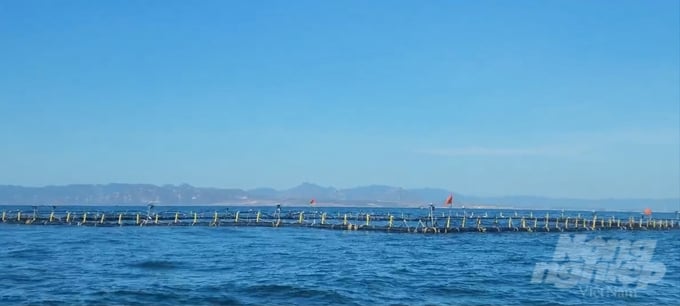
Commercial squid farming cage made of HDPE plastic with an area of 2,304m2 by Mr Nguyen Ba Ngoc. Photo: Phuong Chi.
Here, he invested in 2 semi-natural cages made of HDPE plastic (according to Norwegian technology) with an area of 120m2 and 2,304m2. The cages are 3 nautical miles from the shore, placed on the sea surface, surrounded by long nets down to the seabed (depth from 10 to 13m). Under the cages there are no nets and are stocked with seaweed, creating a natural marine environment for squid to reproduce and develop.
To have a source of squid seeds, Mr. Ngoc is currently collaborating with 2 households in Ninh Hai district to incubate eggs.
Each individual squid has a life cycle of about 15 months. During its life cycle, the squid can reproduce about 50,000 eggs. After being laid, squid eggs will form clusters into seaweed substrates placed on the seabed. After 10 days of the eggs being laid at sea, Mr Ngoc will bring them to the affiliated households to hatch them to produce baby squids.
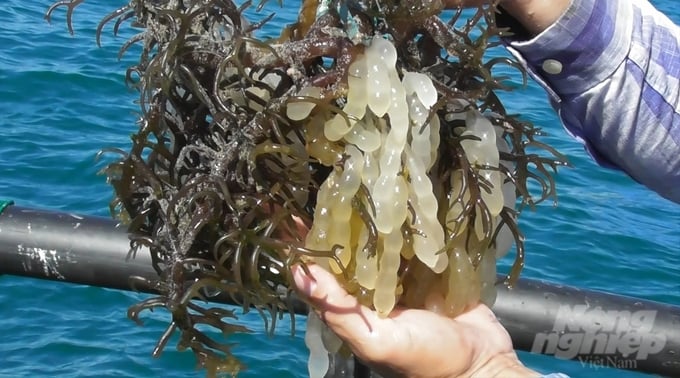
After being laid, squid eggs will form clusters into seaweed substrates placed on the seabed. Photo: Phuong Chi.
After hatching, the squid are picked up and put into tanks 1.5m deep in a dark room to grow to breeding size. Raising baby squid in a dark room helps prevent baby squids from eating each other.
The food source provided for the process of raising baby squid is 100% fresh, the food source is swimming for the baby squid to catch its own prey - mainly live baby shrimp and live fish.
Successfully raising squid in a semi-natural environment has opened a new direction for the aquaculture industry in Ninh Thuan in particular and the country in general.
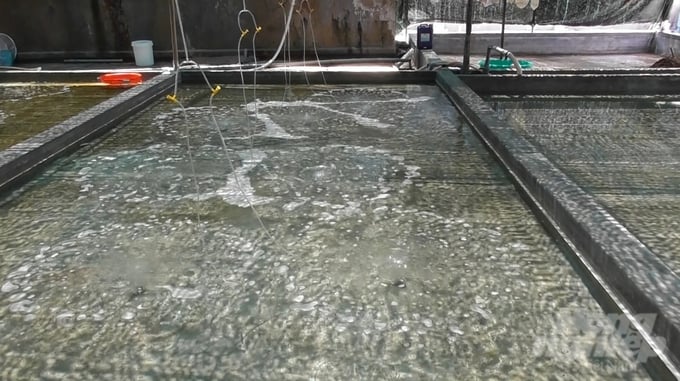
Aquariums with a depth of 40cm are used to incubate squid eggs to hatch baby squids. Photo: Phuong Chi.
With this approach, fishermen will be able to make cages with larger areas, minimizing food sources for squid, when the squid is bigger, the food source for squid becomes less because it takes advantage of the available food in the marine environment. Semi-natural farming also completely helps protect the marine ecosystem.
From the effectiveness of the model, in the coming time, Mr Ngoc hopes to be facilitated by authorities at all levels in policy mechanisms and sea surface infrastructure to expand farming areas. From there, create large cages, and actively source squid broodstock to provide eggs for hatchery production to provide models and fishermen to raise commercial squid. At the same time, expanding links with farmers, transferring farming techniques, and purchasing at the most reasonable prices will help the model be increasingly replicated in the future.
Translated by Hoang Duy
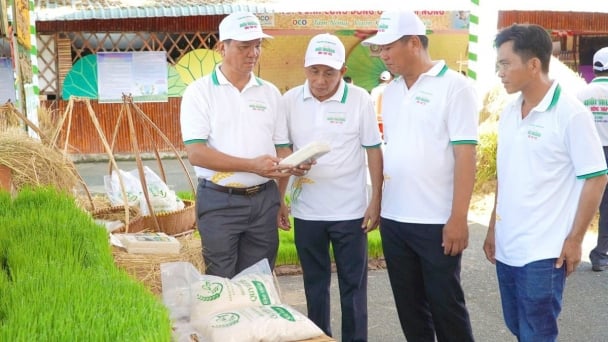
(VAN) Dong Thap has launched a meeting in response to the Action Month for the Environment under the theme 'Live Green - Join Hands for a Green Economy' at Tram Chim National Park.
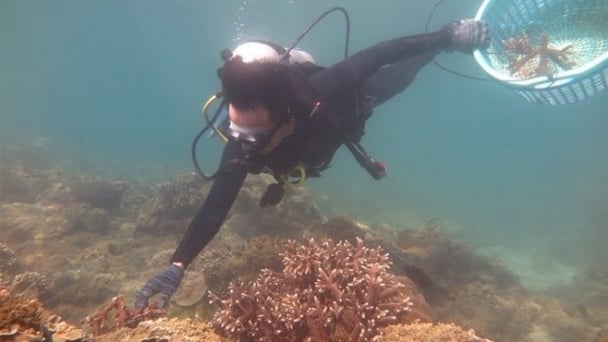
(VAN) The ocean has the capacity to absorb millions of tons of carbon, provided that mangrove forests, coral reefs, and biodiversity are protected.
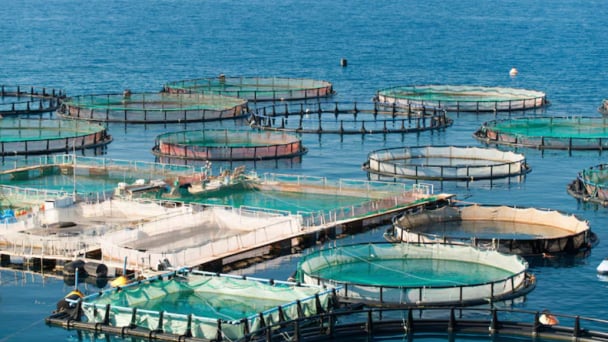
(VAN) Technology is redrawing the map of Vietnamese aquaculture: more modern, greener, and more sustainable.
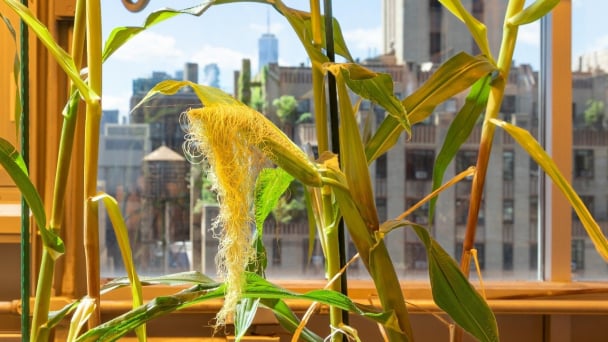
(VAN) Novel process harnesses machine learning to reveal groups of genes that determine how efficiently plants use nitrogen.
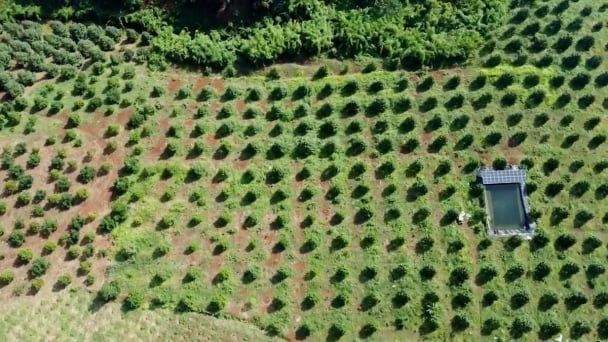
(VAN) Several scientists and farmers are experimenting with soil treatment in some key durian-growing regions such as Cai Lay (Tien Giang), Dak Song, Gia Nghia, and Dak R’lap (Dak Nong).
/2025/05/25/4127-3-073637_820.jpg)
(VAN) Thanks to the promotion from an FAO-implemented project, vegetable production in greenhouses in Moc Chau has seen strong development, from 1.5 hectares in 2021 to nearly 50 hectares in 2024.
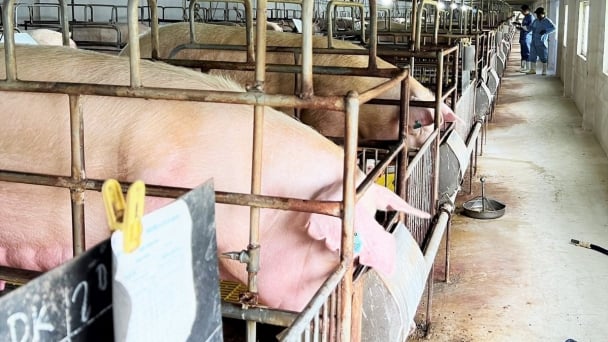
(VAN) FAO has recently supported USD 140,000 to implement the project 'Risk mitigation human-animal interface risks through disease control initiatives in pig farming.'